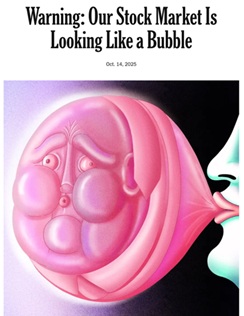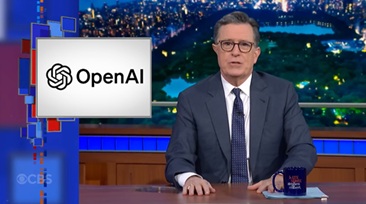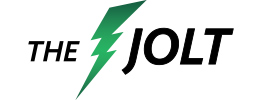The New York Times is warning about an AI bubble…

So too is Late Show host Stephen Colbert.

Live on-air Colbert cited an analyst who said the “AI bubble is 17 times the size of the dotcom frenzy.”
We all know how the dotcom story ended, in an epic crash with tech stocks erasing 80% of their value.
- Is this 1999 all over again?
At the height of the internet boom we built a digital superhighway that nobody used.
By 2001 telecom firms had laid over 80 million miles of fiber-optic cable. That’s enough to wrap around Earth 3,000 times. But less than 3% of those cables were being used.
The rest sat “dark.” Empty pipes waiting for traffic that took a decade to finally arrive.
It was all sizzle and no steak.
Now fast-forward to today and we have an even bigger historic infrastructure buildout.
Big Tech companies will spend over $350 billion this year alone building new AI data centers. That’s larger than the annual economic output of Greece or New Zealand!
It’s the largest buildout in history, bar none.
The difference is when those data centers are built, they won’t sit idle. Microsoft (MSFT) and Oracle (ORCL) are warning clients new AI-ready servers are back-ordered for years.
Unlike fiber cables which sat “dark” for years, demand for AI is off the charts. Google reports that Gemini usage jumped 14X since last December. ChatGPT now has more than 800 million weekly users.
The internet in 1999 had a demand problem. It’s the opposite today.
- My mentor David Galland launched an internet bank during the dot-com frenzy.
He’d walk into VC meetings expecting cheers.
Instead, they’d shrug him off.
Problem was… David actually had a real profitable business. One investor told him straight, “We can’t back you… you have a business plan.”
That was the mood then. Having revenue and profits was a problem! Because revenue was something for investors to anchor expectations to… and it was more fun to dream, untethered from reality.
|
The dot-com buildout was largely financed with debt and dreams.
And I’m not only talking about money losing startups like Pets.com. In the 1990s, most of the companies laying fiber had zero profits and were loaded up to the eyeballs with debt.
That’s why the dotcom buildout turned to bust, and why the bust was so bad.
Fast forward to today and the AI buildout is being financed by the most profitable firms in the history of capitalism.
Microsoft, Amazon (AMZN), Meta (META), and Google (GOOGL) are paying for AI data centers out of their treasure chest of cash flow.
They don’t need to borrow money. And even if funding dried up tomorrow, spending would continue. Just listen to what the men in charge of the purse strings are saying…
Mark Zuckerberg: “If we end up misspending a couple of hundred billion dollars, I think that that is going to be very unfortunate, obviously. But what I’d say is I actually think the risk is higher on the other side.”
Google co-founder Larry Page, “I’m willing to go bankrupt rather than lose this race.”
- But Stephen… AI stocks are overvalued!
That’s what you’d think if you listened to The NYT or late-night talk show hosts.
I’m a data guy. And the data disagrees.
Let’s take the poster child of the AI boom so far, Nvidia (NVDA).
Nvidia stock surged 1,300% in three years. But that doesn’t make it overvalued.
Its earnings have grown so fast that its stock is CHEAPER than when ChatGPT launched three years ago.
It trades at 35 times next year’s earnings.
At the peak of the dotcom boom, the average Nasdaq stock traded at 90 times forward earnings. And hundreds of money-losing startups were valued on nothing but potential.
- But the dotcom boom and AI share similar DNA:
A world-changing technology.
A rapid infrastructure buildout.
And just like in 1999, AI stocks are climbing relentlessly.
That said, the easy, obvious phase—when simply investing in the AI infrastructure players was the right move—is over.
We’re in the AI Endgame now.
Regular readers know I’ve been unapologetically and consistently bullish on AI.
But my outlook has shifted in some important ways.
I’ll explain it all during a special broadcast on November 5.
All RiskHedge readers can join the meeting for free. Click here to register.
Stephen McBride
Chief Analyst, RiskHedge



